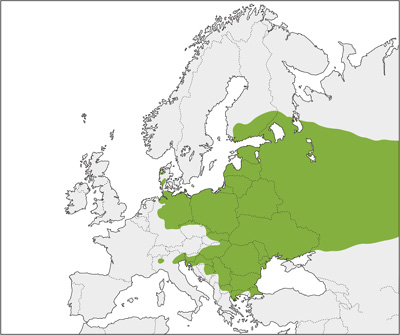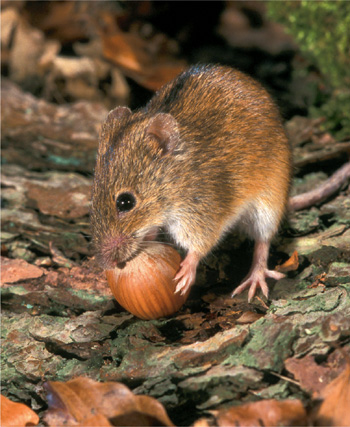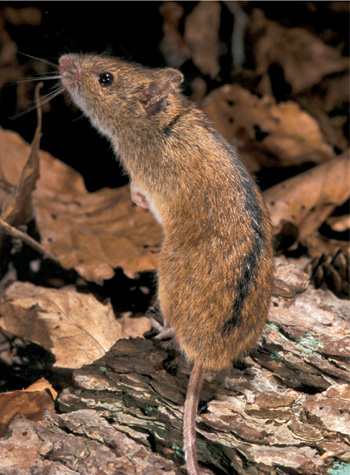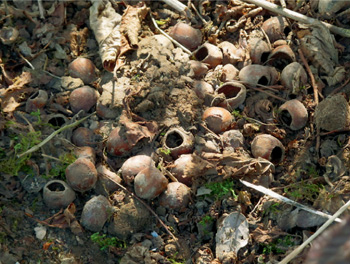
Apodemus agrarius
The Striped Field Mouse gets its name from the pronounced black stripe extending down its back from its ears to its tail. Northern Birch Mouse also has a black stripe on its back but this extends all the way to its eyes. The tail of the Striped Field Mouse is shorter than its body, whereas the tail of a Northern Birch Mouse is longer than its body.
In summer, Striped Field Mice are a rich brown; in winter, somewhat lighter. They are 9.5–12 cm long; the tail is 6.5–9 cm long, about two-thirds the length of the body. They weigh 16–25 g. In summer they may become a shiny reddish brown above, in the winter a duller greyish brown, and underneath they are a greyish white all year-round.
They live mostly in open pasture, wet meadows, fallow fields, field edges, the edges of woodland, and in hedgerows; in eastern Europe they can often be found in parks and gardens. In winter they take refuge in houses and barns and you can then find them in turnip or potato ‘clamps’ (piles of vegetables covered with earth).

Striped Field Mice dig underground tunnel systems with nests and food caches, but these tunnels are not far below the surface. The mice are active day and night. They feed mainly on seeds and fruit but may also eat insects, worms, and snails or gnaw at carrion.
Striped Field Mice will walk or run; they don’t jump or climb as well as Yellow-necked or Wood Mice. The tracks are similar to those of Wood and Yellow-necked Mice, but the hind footprints are somewhat smaller, 16–18 mm.
They gnaw on nuts in the same fashion as Bank Voles. The nut is held with the point facing away from the mouse and under the mouse’s chest. After gnawing a hole in the nut, the mouse puts its snout in the hole and, using its lower teeth, eats from the outside in, on the closest edge. This is how a sharp edge is formed in the nutshell but with no tooth marks on the outside.
Striped Field Mice relish hazelnuts. LG.

Striped Field Mice can be identified by the black stripe on the back. LG.

A Striped Field Mouse’s cache of nuts.
